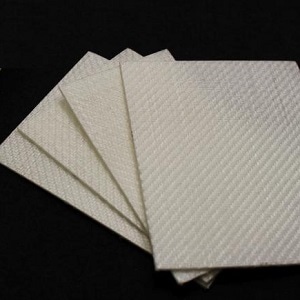Mar 14 2019
Driven by the wish to tackle environmental issues and work towards the EC Plastics Strategy, the composite materials developed in the Bio4self project are fully bio-based, easily recyclable, reshapable and even industrially biodegradable. The composites are produced using one type of material: Poly(lactic acid) or PLA, a thermoplastic bio-polyester derived from renewable resources such as agricultural waste, non-food crops or sugar cane.

Apart from some medical applications (e.g. tissue scaffolds), PLA use is currently very limited, e.g. low-demanding packaging or agrotextiles. Bio4self brought PLA to the next level of application, such as parts for automotive and home appliances, by combining two types of PLA to form so called self- reinforced PLA composites (PLA SRPC).
The associated partners in this project are Centexbel, Comfil, Fraunhofer-Gesellschaft.
Overcoming PLA SRPC Production Challenges
Two different PLA grades are required to produce SRPCs: a low melting temperature PLA grade to form the matrix and an ultra-high stiffness and high melting temperature PLA grade to form the reinforcing fibers.
The two PLA grades selected for Bio4self have a melting temperature difference of about 20°C, leaving a sufficient temperature processing window. Bio4self innovations overcome several challenges related to the production of PLA SRPC:
- Formulation of a moisture/humidity-resistant PLA grade
- Melt extrusion of ultra-high stiffness PLA reinforcement fibers
- Development of (consolidation and thermoforming) manufacturing procedures to produce the highest performance SRPC material; and
- Industrial scale-up of production
Key Benefits of Self-Reinforced Composite
- Biobased: composites made from two PLA grades with different melting temperatures
- Performance: high mechanical strength, temperature and hydrolytic stability
- Cost: far below carbon fibre composites, comparable to or even below SR-PP
- Upscalable: using commercially-available materials and industrial equipment
- EoL: re-usable, recyclable or industrially compostable as the composite is made of PLA
As a result, the PLA SRPC developed in Bio4self matches the requirements of current commercial self-reinforced polypropylene (PP) composites. Self-reinforced PLA composites made of 0/90 fabric have a stiffness of 4 GPa, which is comparable to the stiffness achieved by self-reinforced PP, but the PLA SRPC has the advantage of using renewable materials with a better end-of-life perspective.
This innovation has been selected as a finalist for the JEC Innovation Awards 2019 in the Sustainability category.